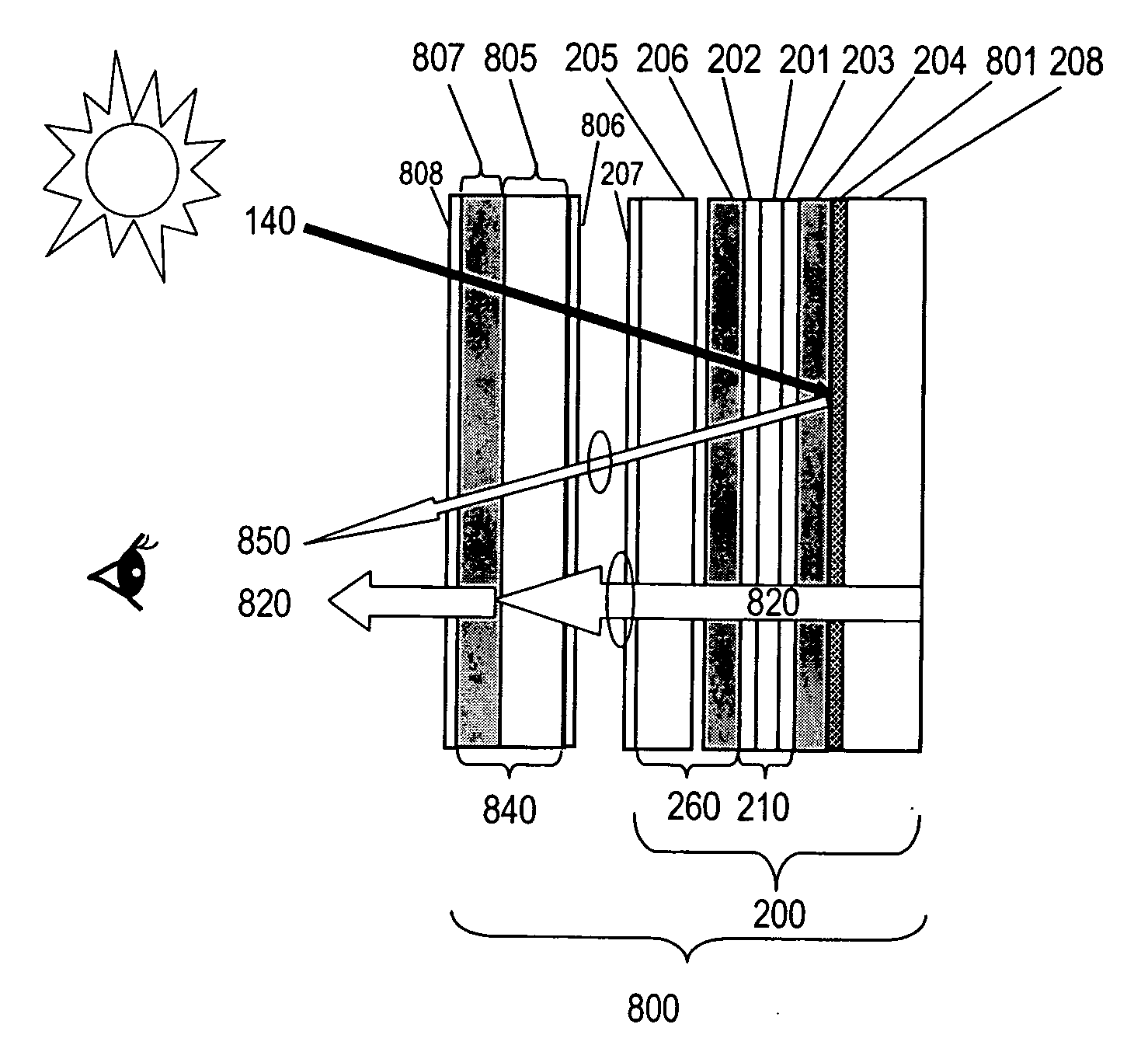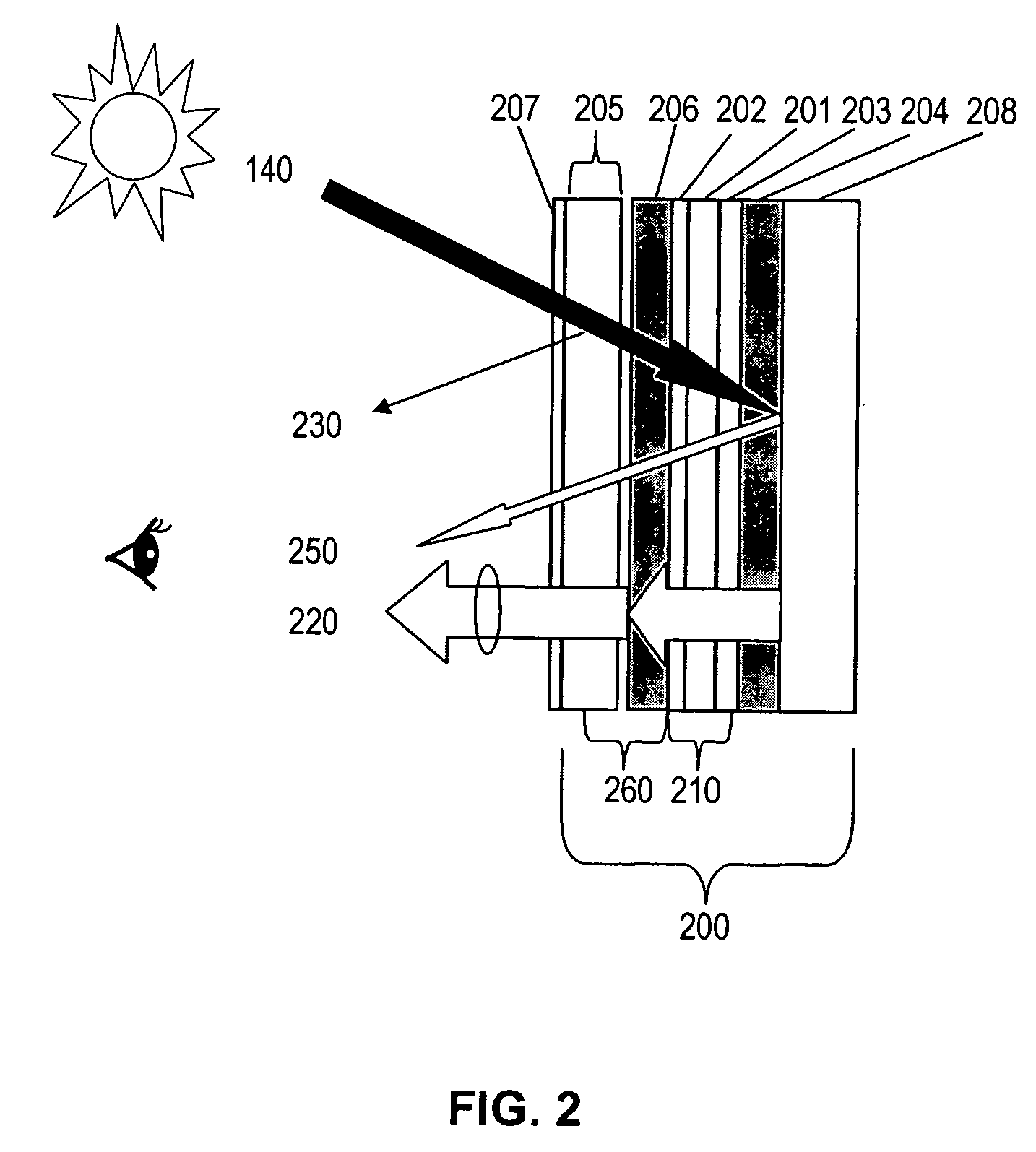Controlling polarization for liquid crystal displays
a liquid crystal display and control polarization technology, applied in non-linear optics, instruments, optics, etc., can solve the problems of high difficulty in providing a sunlight readable display system integrated with emi, inconvenient outdoor applications, touch panel, etc., and achieves low reflection and increased contrast and brightness.
- Summary
- Abstract
- Description
- Claims
- Application Information
AI Technical Summary
Benefits of technology
Problems solved by technology
Method used
Image
Examples
example 1
[0093] A 10.4″ NLP-LCD with right-handed circular polarization output was tested and demonstrates no dark viewing zones for viewers wearing polarized sunglasses.
[0094] In comparison, an 10.4″ LCD with 45 degree linear polarization output with 200 nits measured brightness, shows dark viewing zones in directions of about 1:00 and 7:00 o'clock when viewed with polarized sunglasses on. This LCD was converted to an NLP-LCD with right-handed circular polarization output by laminating a quarter wave retardation film, 65 um in thickness, with its slow axis oriented at an angle of −45 degree with respect to the linear polarization of the LCD. The brightness of the converted LCD was measured as 185 nits and showed no dark viewing zones when viewed with polarized sunglasses on.
example 2
[0095] A 10.4″ NLP-LCD integrated with a polarized resistive touch panel shows no limitation on the orientation of the second circularly polarizing plate on the touch panel. The second right-handed circularly polarizing plates were prepared by laminating together a quarter wave plate retarder described in Example 1 and a linear polarizer having a thickness of 100 um, a transmission ˜43%, and a polarization coefficient —96% . The second right-handed circular polarizer was laminated in various orientations on a 5-wired 10.4″ resistive touch panel (82% transmission) to generate low reflection polarized touch panels. The low reflection polarized touch panel with various orientation of the second linear polarization axis was then disposed on the NLP-LCD generated as described in Example 1. Brightness of light output was measured. The brightness measured and the various orientations of the polarization axis are summarized below:
Orientation of theBrightness (nits) of the lightsecond line...
PUM
 Login to View More
Login to View More Abstract
Description
Claims
Application Information
 Login to View More
Login to View More - R&D
- Intellectual Property
- Life Sciences
- Materials
- Tech Scout
- Unparalleled Data Quality
- Higher Quality Content
- 60% Fewer Hallucinations
Browse by: Latest US Patents, China's latest patents, Technical Efficacy Thesaurus, Application Domain, Technology Topic, Popular Technical Reports.
© 2025 PatSnap. All rights reserved.Legal|Privacy policy|Modern Slavery Act Transparency Statement|Sitemap|About US| Contact US: help@patsnap.com



